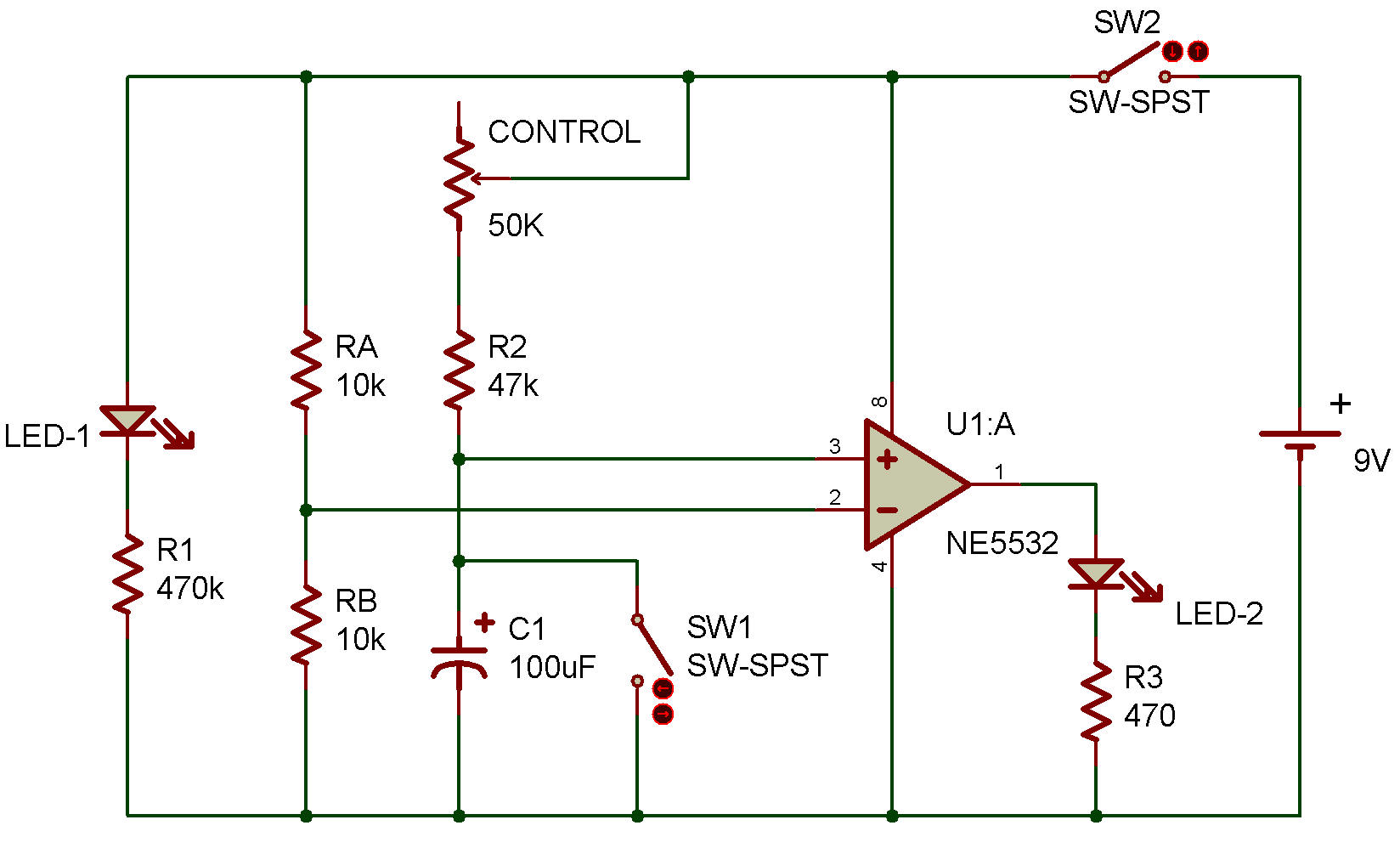
Delayed Timer
NE5532

This circuit is a delayed timer that uses an operational amplifier and the CR time constant. You remember that CR stands for capacitor/resistor.
A time constant circuit is a circuit that delays an operation.
The negative ( - ) terminal of the operational amplifier receives a voltage of about 4.5V through resistors RA and RB.
This is the comparator's reference voltage. The positive (+) terminal of the comparator is connected to capacitor C1.
This capacitor receives its charge through the series resistance of R2 and the control. The charging speed is slower when the resistance is large, and faster when the resistance is small.
This charging speed sets the delay time for the timer circuit.
Now turn the control fully clockwise to position 10. Set the switch to position ON to turn on the power.
LED 1 lights first; LED 2 lights about 5 to 7 seconds later.
This 5 to 7 second time difference is the delay time that is set by the CR time constant.
Now, turn off the power, set the control fully counter-clockwise to position 1, and see what happens when you turn on the power again.
LED 2 lights later than LED 1 again, but how many seconds later?
